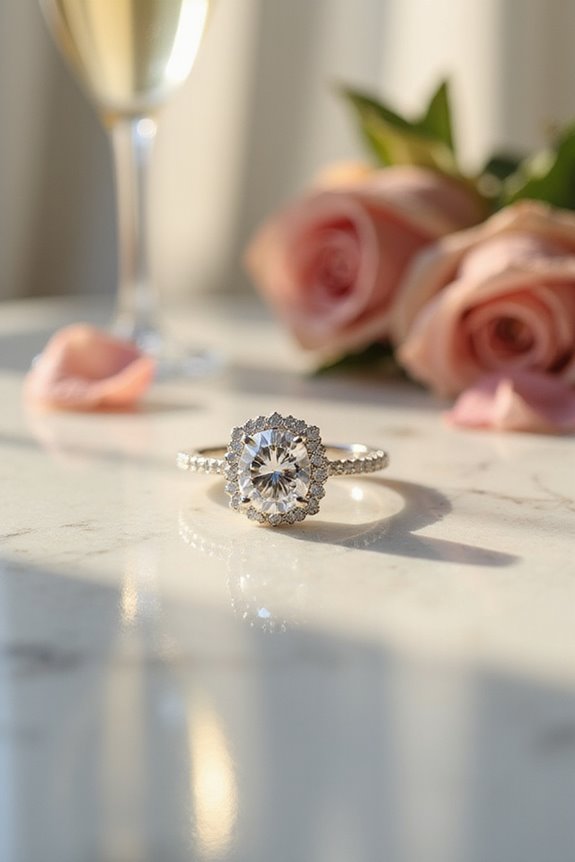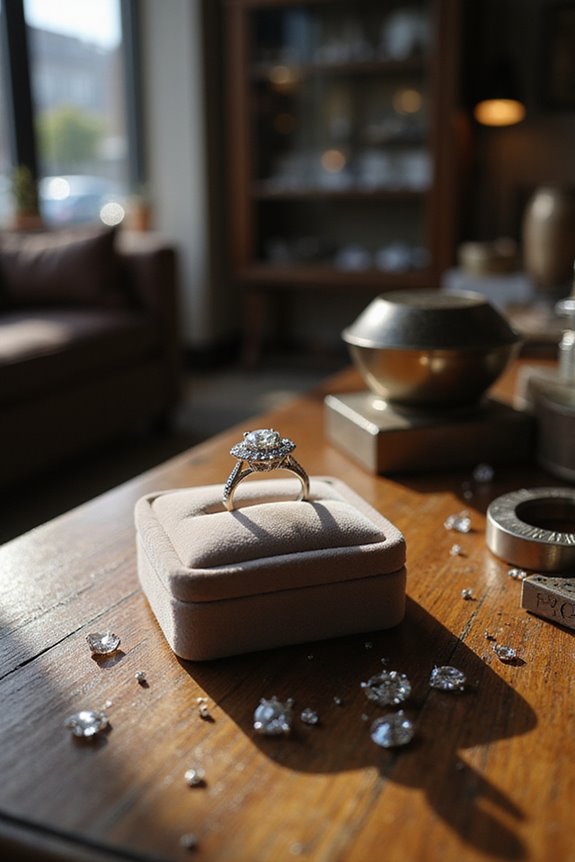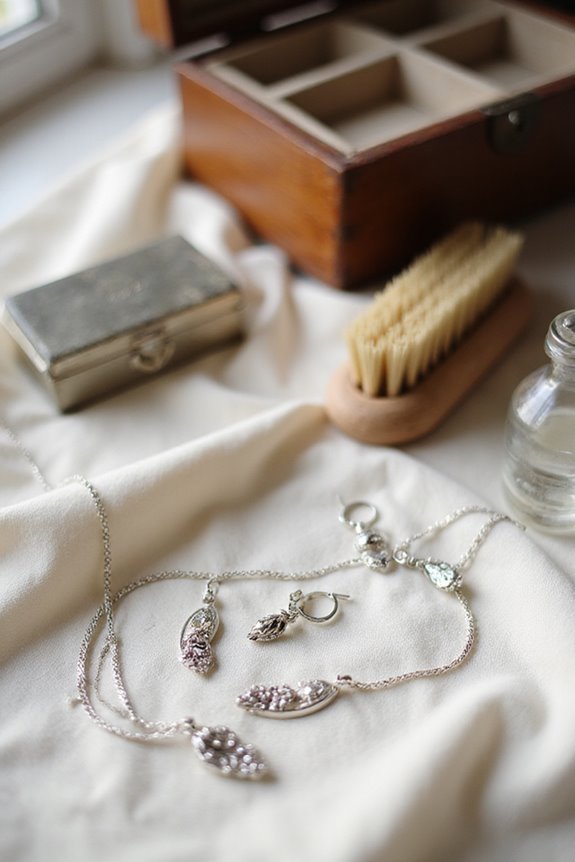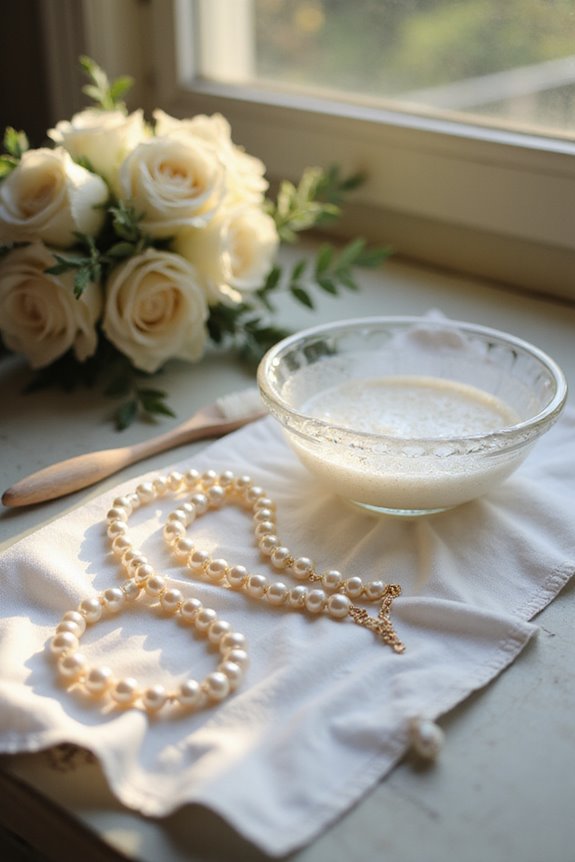When it comes to diamond quality, we’ve gotta focus on the 4Cs: cut, color, clarity, and carat weight. For example, a well-cut diamond sparkles beautifully, even if it’s smaller. Color matters too—choose D-F for that colorless look. Clarity can trip us up, so understand grades like SI and VS. To save some bucks, consider a slightly lower color or clarity, but prioritize that cut! Stick around, and we’ll guide you through the details.
Key Takeaways
- The 4Cs of diamond quality—cut, color, clarity, and carat weight—are essential for assessing overall diamond value and appearance.
- Cut significantly impacts a diamond’s sparkle; prioritize excellent cut over size for the best visual effect.
- Color grading ranges from D (colorless) to Z; higher color grades are more valuable, impacting overall beauty.
- Clarity is graded from Flawless (FL) to Included (I3); understanding this helps in making informed purchasing decisions.
- Always seek reliable certification to ensure the diamond’s quality, authenticity, and value in resale and insurance contexts.
Understanding the 4Cs of Diamond Quality
When it comes to choosing a diamond, understanding the 4Cs can feel a bit overwhelming at first, but don’t worry—we’re here to break it down together.
Cut Significance
The cut is vital because it determines how well a diamond sparkles. A well-cut diamond reflects light beautifully, while a poor cut can make even a large stone look dull. Think of it this way: a smaller diamond with an excellent cut can outshine a bigger one with a poor cut.
Color Impact
Color grading measures how colorless a diamond is. Colorless stones (D-F) are rarer and more valuable, while slight tints can detract from its beauty. So, when you’re shopping, remember that both cut and color play essential roles in a diamond’s overall allure. Happy hunting!
The Clarity Grading Scale Explained
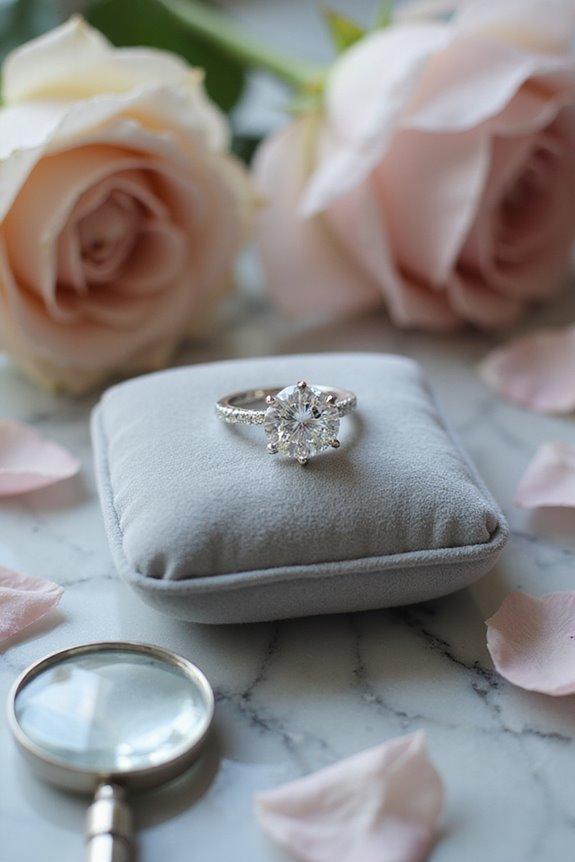
Maneuvering the clarity grading scale can feel like deciphering a secret code, but don’t fret—we’ve got your back! The GIA clarity grading scale includes 11 distinct clarity categories, from Flawless (FL) to Included (I3). Most diamonds fall into the VS (Very Slightly Included) or SI (Slightly Included) categories, where inclusions might be tricky to spot.
When examining a diamond, expert gemologists use 10x magnification to guarantee grading precision. For example, an FL diamond has no imperfections, while an SI diamond may have noticeable inclusions. Understanding these categories helps us make informed choices, guaranteeing we get the best sparkle for our budget. So, let’s keep this secret code handy and shine bright together! Additionally, considering the diamond shape preferences can further enhance the overall appearance of the ring.
Factors Influencing Clarity
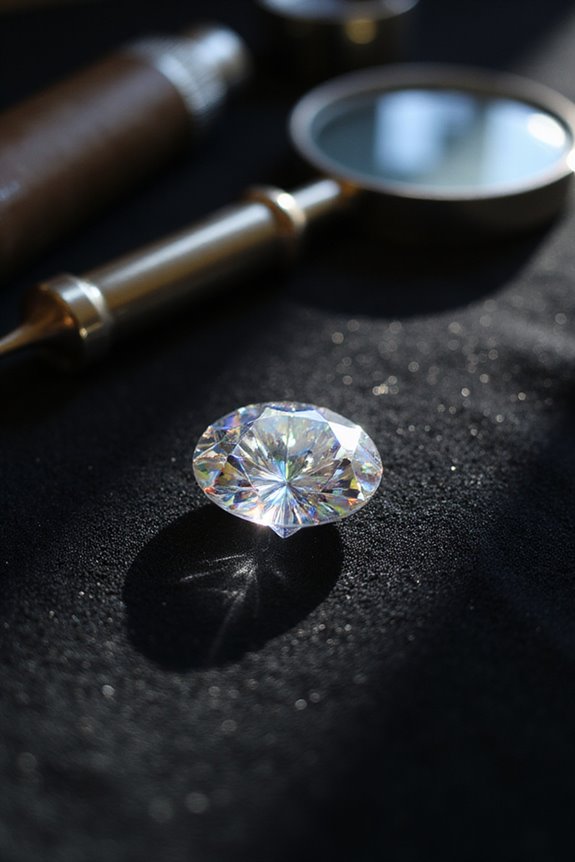
Understanding the factors influencing a diamond’s clarity can feel a bit overwhelming, but we’re here to break it down together.
Inclusion Size and Location
Larger inclusions usually hurt clarity grades more than smaller ones. If they’re centrally located, it’s even worse. Think of it like having a big smudge on your favorite shirt!
Inclusion Number
More inclusions can mean a lower clarity grade, but a few large ones are more damaging than many tiny ones.
Inclusion Relief
High-relief inclusions stand out, while low-relief ones blend in, making them less noticeable.
Inclusion Nature
Some inclusions, like feathers, may weaken the diamond. Always consider how they might affect durability and beauty.
Finding Value for Money in Diamonds

Finding value for money in diamonds can feel a bit like searching for hidden treasure. To begin our value assessment, we should balance carat weight, color, cut, and clarity. For instance, a 1-carat G color diamond might cost around $4,000, while a D color diamond can exceed $6,000. Now that’s a big jump!
Next, let’s keep an eye on market trends. When demand shifts, prices can fluctuate, so timing our purchase can lead to better deals. If we opt for a slightly lower color or clarity grade, along with an excellent cut, we can save money without sacrificing beauty. Remember, a well-cut diamond sparkles like a star, no matter its size! Happy treasure hunting!
The Importance of Certification and Grading
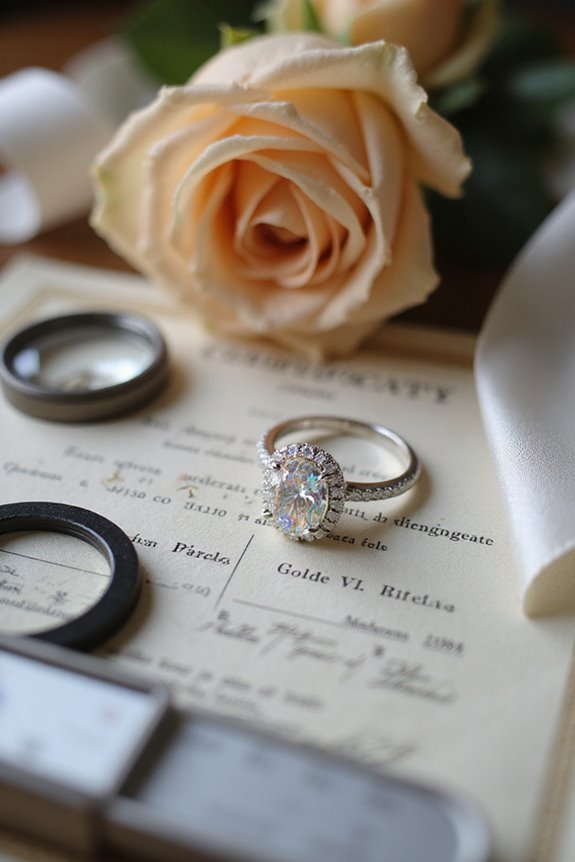
When it comes to buying diamonds, having a reliable certification is like having a trusted friend by your side. It’s essential for ensuring grading accuracy, which affects the diamond’s value. The certification process involves multiple evaluations by experienced graders who confirm clarity, cut, color, and carat weight. This thoroughness gives us confidence that we’re getting what we pay for.
Think of it this way: a good certificate tells us if the diamond is natural or lab-grown, much like a birth certificate for your gem. Plus, it helps with resale and insurance. So, before making a purchase, let’s always check for that certification. After all, we wouldn’t want to buy a diamond without knowing it’s the real deal, would we?
Practical Tips for Buying Diamonds
Have you ever wondered how to make the best choice when buying a diamond? First, let’s think about diamond settings. Popular options like solitaire, halo, or pavé can dramatically affect the look of your ring. Next, consider metal choices—platinum, white gold, or even rose gold can change the overall vibe and durability.
When you’re evaluating diamonds, remember to check them in different lighting. This helps you see their true sparkle. And don’t forget the 4Cs! A solid balance of carat weight, color, and clarity can help us find those “sweet spots” that look great without breaking the bank. Finally, working with trusted jewelers can guarantee we make informed decisions. Happy diamond hunting!
Frequently Asked Questions
How Do Diamonds Compare to Other Gemstones in Quality?
Think of gemstones as a vibrant garden; while diamonds shine like the sun, their hardness and clarity set them apart in quality assessment. In our gemstone comparison, diamonds often lead, showcasing unmatched durability and brilliance.
Can Diamond Treatments Affect Clarity and Value?
We recognize that treatment types like fracture filling and laser drilling can enhance clarity but often lower a diamond’s value. It’s essential to understand these impacts when considering your options for a purchase.
What Is the Significance of Diamond Fluorescence?
When considering diamond fluorescence, we should recognize its impact on appearance and value. Understanding grading standards helps us assess how fluorescence can enhance or detract from a diamond’s overall beauty and desirability.
How Can I Ensure My Diamond’s Authenticity?
Did you know over 80% of diamonds sold lack proper certification? To guarantee our diamond’s authenticity, we should rely on certification standards and expert appraisals—these steps provide vital protection against fraud and assure quality.
What Are the Best Ways to Care for a Diamond?
To care for our diamonds, we should use gentle cleaning methods regularly and store them in separate compartments. By following these tips, we’ll keep their brilliance and avoid damage from dirt and scratches.

